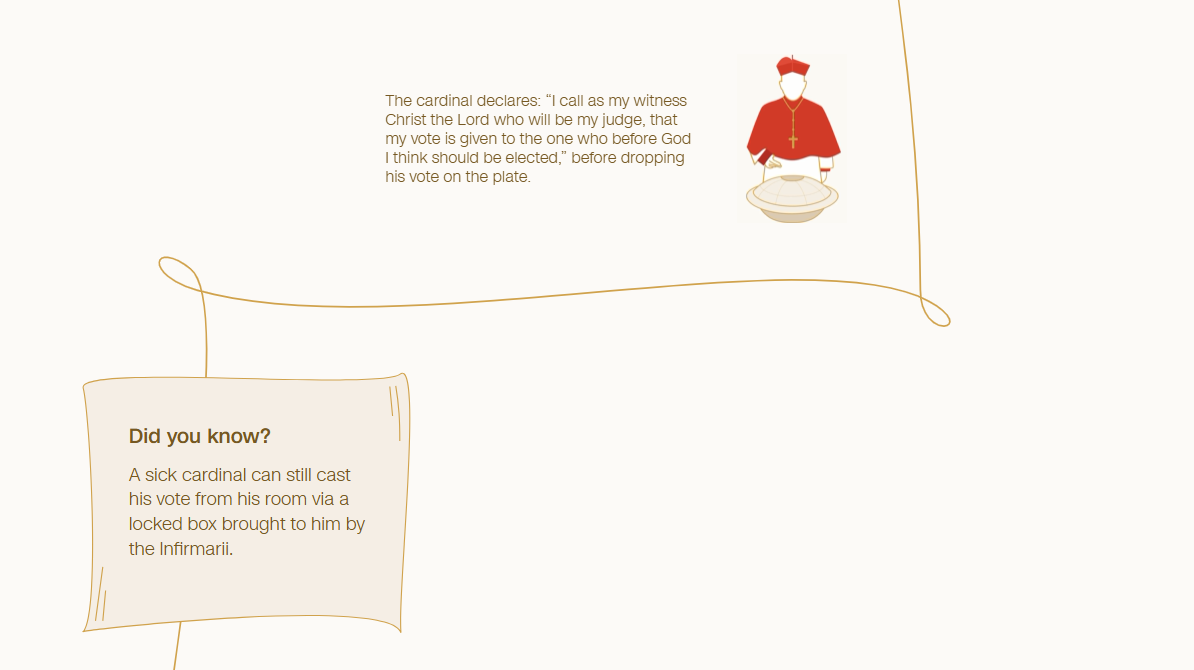Conclave: A visual guide to the secretive process of choosing a new pope
Lauren Said-Moorhouse
By Lauren Said-Moorhouse, Eleanor Stubbs, Olivia Kemp, Lou Robinson, Patrick Gallagher and Henrik Pettersson, CNN
2 minute read
Published 12:00 AM EDT, Mon April 28, 2025
For centuries, the leader of the Catholic Church has been chosen in a highly secretive gathering known as “conclave,” meaning “with key” in Latin – a nod to how cardinals used to be locked in until a new pope was selected. Cardinals tasked with picking the next pontiff follow an elaborate process with roots in the Middle Ages.
The rituals as we know them today have been subsequently revised by successive popes. The bulk of the modern rulebook that cardinals follow was overhauled by John Paul II in the 1996 Apostolic constitution known as “Universi Dominici Gregis,” with a few further adjustments by Benedict XVI.
Once the date is set, the cardinal electors head to the home of conclave – the Vatican’s Sistine Chapel. A candidate needs two-thirds of the votes cast to be elected. From solemn oaths to intricate voting procedures and the famed white smoke, here’s how the centuries-old process unfolds.
Note: The hierarchal diagram shows a simplified overview, not all roles are included.
Source: The Vatican Press Office
While many cardinals live and work at the Vatican, most are spread across the world and are required to head to Rome “unless they are hindered by sickness or by some other grave impediment.”
As many as four votes a day can take place (two in the
morning and two in the afternoon) for the first four days of
conclave. On the fifth day, voting is suspended to allow time
for prayer, quiet reflection and informal discussion.
Voting resumes no more than a day later and continues for
another seven rounds before another break. If the stalemate
continues, cardinals can choose to vote between the two
leading candidates in the ballot immediately preceding; only
an absolute majority is then needed.
Shortly after, the new pope steps onto the balcony, framed by red curtains, and delivers his first apostolic blessing, known as the “Urbi et Orbi” (“To the City and to the World”).
This brings the intricate process of conclave to an end. The days ahead will see the new pontiff attend his inauguration Mass, which usually takes place at St. Peter’s Basilica, before assuming his duties as the head of the Catholic Church.



















